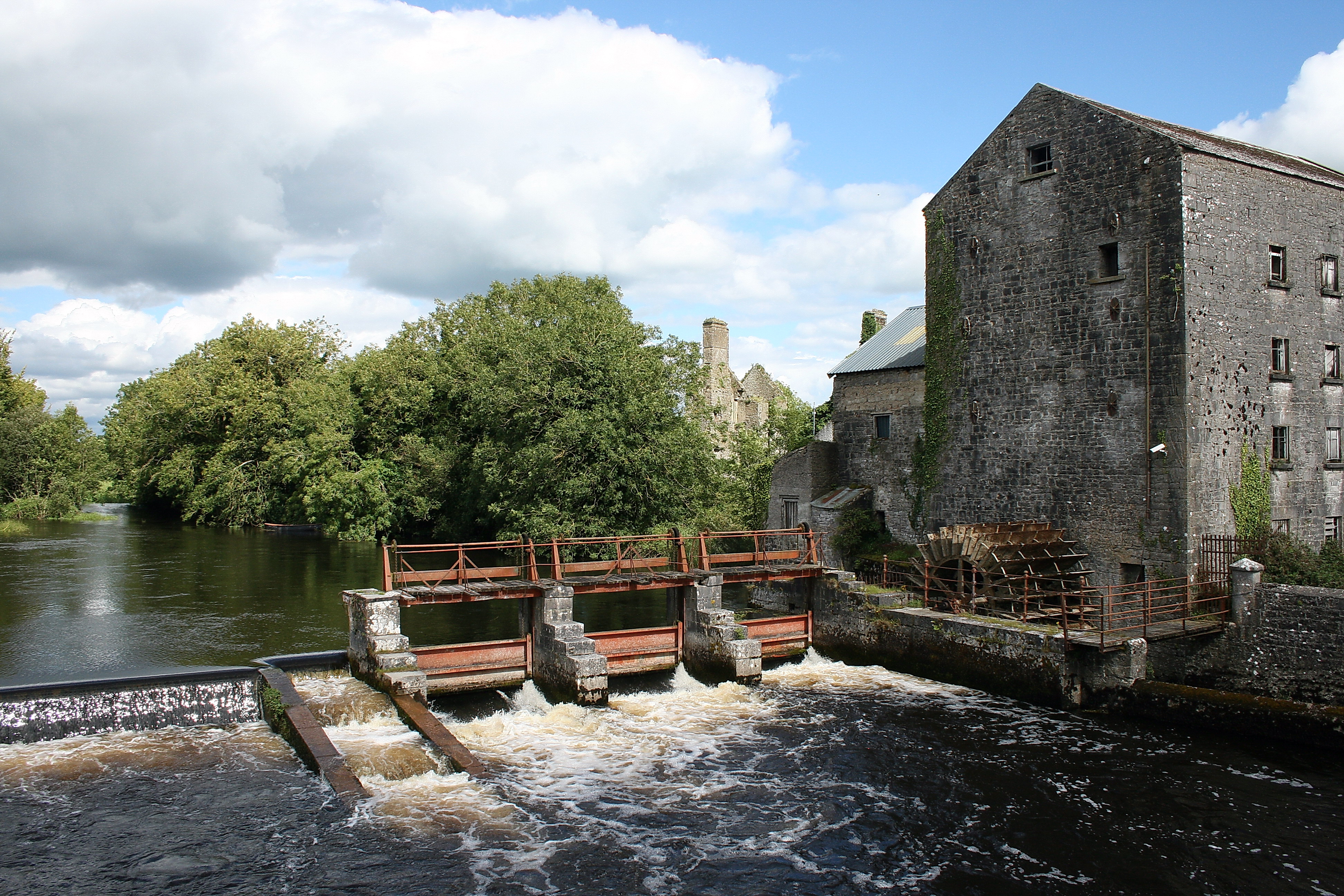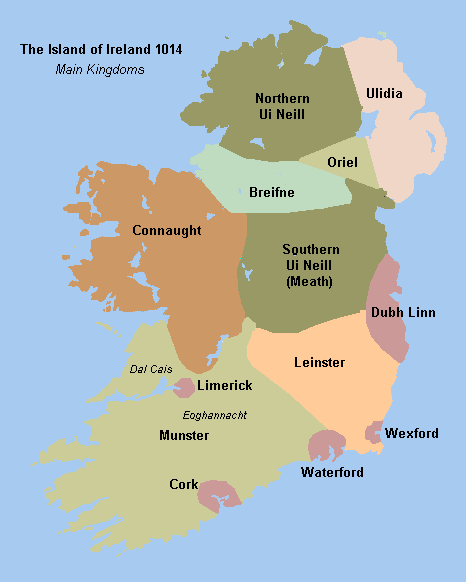|
Síol Maelruain
Síol Maelruain was a territory located in north County Roscommon due west, from what is now Castlerea. Its lake, Lough O'Flynn, is the source of the River Suck and is located at the foot of Slieve O'Flynn mountain. The lordship was centered on the village of Ballinalough, its rulers been the Ó Floinn family. David Flynn (chaplain) (died 1770) was Chaplain to James III. Annalistic references 1104. Fiachra Ua Floinn, chief of Síol Maelruain, was killed by the Conmaicne. 1133. ''A great army of Leth Mogha under Cormac grandson of Carthach and Conchobor ua Briain went into Connachta and cut down the Ruadbeitheach and the Belata and killed Cathal son of Cathal, heir designate of Connachta, and Gilla na Naem ua Flainn, chief of Síl Maílruain.'' 1192. Hugh Ua Floinn, Chief of Síol Maelruain, died. 1200. Fiachra Ua Floinn, Chief of Síol Maelruain, died 1228. David Ó Floinn, Chief of Síol Maelruain, and Rory O'Mulrenin, died. 1240. Hugh, the son of Gilla Aa Naemh Crom O'Sha ... [...More Info...] [...Related Items...] OR: [Wikipedia] [Google] [Baidu] |
County Roscommon
County Roscommon () is a Counties of Ireland, county in Republic of Ireland, Ireland. It is part of the province of Connacht and the Northern and Western Region. It is the List of Irish counties by area, 11th largest Irish county by area and List of Irish counties by population, 26th most populous. Its county town and largest town is Roscommon. Roscommon County Council is the Local government in the Republic of Ireland, local authority for the county. The population of the county was 69,995 as of the 2022 census. Etymology County Roscommon is named after the county town of Roscommon. Roscommon comes from the Irish ''Ros'' meaning a wooded, gentle height and ''Coman mac Faelchon, Comán'', the first abbot and bishop of Roscommon who founded the first monastery there in 550 AD. Geography County Roscommon has an area of . Lough Key in north Roscommon is noted for having thirty-two islands. The geographical centre of Ireland is located on the western shore of Lough Ree in the south ... [...More Info...] [...Related Items...] OR: [Wikipedia] [Google] [Baidu] |
Castlerea
Castlerea ( ; ) is a town in County Roscommon, Ireland. It is located in the west of the county and had a population of 2,348 at the 2022 census. Roughly translated from Irish, Castlerea is generally thought to mean 'brindled castle' (''Caisleán Riabhach''). An alternative translation is 'castle of the king' (''Caisleán Rí''). The town is built on the banks of the River Suck and the River Francis, both of which are tributaries of the River Shannon. History Clonalis House, located in the west of Castlerea, is the ancestral home of the Clan O'Conor, the last of the High Kings of Ireland. The O'Connor dynasty produced eleven high kings of Ireland and twenty-four kings of Connacht. Theophilus Sandford, a member of Oliver Cromwell's army in Ireland, received a large allocation of lands confiscated from the O'Connor family as part of the Act for the Settlement of Ireland 1652. This package included Castlerea. Castlerea developed under the Sandfords, who established a dist ... [...More Info...] [...Related Items...] OR: [Wikipedia] [Google] [Baidu] |
Lough O'Flynn
Lough O'Flynn () is a freshwater lake in the west of Ireland. It is located in west County Roscommon and is the source of the River Suck. Name The name is from the Gaelic Irish tribe of the Ó Floinn, who ruled the region known as Síol Maelruain in the Middle Ages. The tribe was one of the main families in Kiltullagh parish. Geography Lough O'Flynn measures about long and wide. It is located about east of Ballyhaunis, just north of the village of Ballinlough and is the source of the River Suck. There is an artificial island known as a crannog in the lake; this is believed to date back to the Medieval period, when it would have been used as a place of safety to retreat to when under attack. There are marked trails along bog tracks leading around the lake, with views of the lake and river as well as surrounding areas of bog scrub, coniferous woodland and open peatland. Natural history Fish species in Lough O'Flynn include roach, perch, brown trout, pike and the critically ... [...More Info...] [...Related Items...] OR: [Wikipedia] [Google] [Baidu] |
River Suck
The River Suck ( ) is a river within the Shannon River Basin in Ireland, 133 km (82.5 mi) in length. It is the main tributary of the River Shannon. It meets the Shannon a kilometre south of the village of Shannonbridge. Name The river's name is derived from the Irish ''suca''. The Placenames Database of Ireland, Placenames Branch of the government Department of Tourism, Culture, Arts, Gaeltacht, Sport and Media observed that "the root word is wrapped in a web of uncertainty and lost in the mists of time". Edmund Hogan's ''Onomasticon Goedelicum'' (1910) records the spellings ''suġ'' (''sugh''), suggesting connections to Old Irish ''súg'' ("juice, sap"). Course The River Suck drains an area of . It forms much of the border between County Roscommon and County Galway, flowing along the western side of County Roscommon. Together with the Shannon on the east, it creates the long narrow form of southern County Roscommon. The river rises in hills on the border of County ... [...More Info...] [...Related Items...] OR: [Wikipedia] [Google] [Baidu] |
Flynn
Flynn is an Irish surname or first name, an anglicised form of the Irish Ó Floinn or possibly Mac Floinn, meaning "descendant or son of Flann" (a byname meaning "reddish (complexion)" or "ruddy"). The name is more commonly used as a surname than a first name. According to John O'Donovan's 1849 works, the modern descendants of Lugaid mac Con include the O'Driscolls, O'Learys, Coffeys, Hennessys and Flynns of County Cork. According to historian C. Thomas Cairney, the O'Flynns, along with the O'Coffeys, O'Dinneens, O'Driscolls, O'Heas, O'Hennessys and O'Learys, were chiefly families of the Corca Laoghdne tribe, who in turn came from the Erainn tribe who were the second wave of Celts to settle in Ireland from 500 to 100 BC. People Acting * Barbara Flynn (born 1948), English actress * Brandon Flynn (born 1993), American actor * Daniel Flynn (actor) (born 1961), English actor * Errol Flynn (1909–1959), Australian-American movie actor * Jerome Flynn (born 1963), ... [...More Info...] [...Related Items...] OR: [Wikipedia] [Google] [Baidu] |
David Flynn (chaplain)
David Flynn may refer to: * David Flynn (composer) (born 1977), Irish composer and musician * David Flynn (chaplain) (died 1770), Irish Dominican * David Flynn (Gaelic footballer), Gaelic footballer from Clonown in County Roscommon * David Flynn (soccer) (born 1989), American soccer player * David Flynn, co-founder of Fusion-io Fusion-io, Inc. was a computer hardware and software systems company (acquired by SanDisk Corporation in 2014) based in Cottonwood Heights, Utah, that designed and manufactured products using flash memory technology. The Fusion was marketed ... * David Flynn, engineer designer of RISC architectures, co-recipient of the IEEE/RSE James Clerk Maxwell Medal with Dave Jaggar {{human name disambiguation, Flynn, David ... [...More Info...] [...Related Items...] OR: [Wikipedia] [Google] [Baidu] |
Conmaicne
The Conmaicne (; ) were a people of early Ireland, perhaps related to the Laigin, who dispersed to various parts of Ireland. They settled in Connacht and Longford, giving their name to several Conmaicne territories. T. F. O'Rahilly's assertion the Conmaicne were non-Goidelic languages, Goidelic is not widely accepted. Etymology Their name originates from a mythical ancestor known as ''Conmac(c)'' (), meaning "hound-son" (, prefix form of n-stem hound; , son). Conmac(c) descended from Fergus mac Róich and Queen Medb of Connacht. However, Paul Walsh (priest), Walsh stated "Conmac son of Fergus is a genealogical fiction". The word ''Conmaicne'' means "progeny of Conmac" (''-ne'', a progeny). The name in Old Irish spelling contains ''m'' (without a following ''h'') and ''c'' (or more etymologically, ''cc''), thus Old Irish Conmac(c) and Conmaic(c)ne, but in Modern Irish language, Irish spelling contains ''mh'' (with unetymological ''h'' as a sign of lenition) and single ''c'', thu ... [...More Info...] [...Related Items...] OR: [Wikipedia] [Google] [Baidu] |
Roscommon
Roscommon (; ; ) is the county town and the largest town in County Roscommon in Republic of Ireland, Ireland. It is roughly in the centre of Ireland, near the meeting of the N60 road (Ireland), N60, N61 road (Ireland), N61 and N63 road (Ireland), N63 roads. The town is in a Civil parishes in Ireland, civil parish of the same name. The name Roscommon is derived from Commán of Roscommon, Commán mac Faelchon who built a monastery there in the 5th century. The woods near the monastery became known as Ros Comáin (''St. Coman's Wood''). This was later anglicised to Roscommon. Its population at the 2022 census of Ireland, 2022 census was 6,555. History Roscommon was the homeland of the Connachta dynasty, and included such kingdoms as Uí Maine, Delbhna Nuadat, Síol Muirdeach, and Moylurg. In addition, it contained areas known as Trícha cét's, Túath and is the homeland of surnames such as Ó Conchobhair (O'Conor, O'Conor, O'Connor), Mac Diarmada (McDermott), Ó Ceallaigh (Kelly ... [...More Info...] [...Related Items...] OR: [Wikipedia] [Google] [Baidu] |
History Of County Roscommon
County Roscommon () is a county in Ireland. It is part of the province of Connacht and the Northern and Western Region. It is the 11th largest Irish county by area and 26th most populous. Its county town and largest town is Roscommon. Roscommon County Council is the local authority for the county. The population of the county was 69,995 as of the 2022 census. Etymology County Roscommon is named after the county town of Roscommon. Roscommon comes from the Irish ''Ros'' meaning a wooded, gentle height and '' Comán'', the first abbot and bishop of Roscommon who founded the first monastery there in 550 AD. Geography County Roscommon has an area of . Lough Key in north Roscommon is noted for having thirty-two islands. The geographical centre of Ireland is located on the western shore of Lough Ree in the south of the county. Roscommon is the third largest of Connacht's five counties by size and the second-smallest in terms of population. It ranks 11th in size of Ireland's 32 coun ... [...More Info...] [...Related Items...] OR: [Wikipedia] [Google] [Baidu] |
Connacht
Connacht or Connaught ( ; or ), is the smallest of the four provinces of Ireland, situated in the west of Ireland. Until the ninth century it consisted of several independent major Gaelic kingdoms (Uí Fiachrach, Uí Briúin, Uí Maine, Conmhaícne, and Delbhna). Between the reigns of Conchobar mac Taidg Mór (died 882) and his descendant, Aedh mac Ruaidri Ó Conchobair (reigned 1228–33), it became a kingdom under the rule of the Uí Briúin Aí dynasty, whose ruling sept adopted the surname Ua Conchobair. At its greatest extent, it incorporated the often independent Kingdom of Breifne, as well as vassalage from the lordships of western Mide and west Leinster. Two of its greatest kings, Tairrdelbach Ua Conchobair (1088–1156) and his son Ruaidri Ua Conchobair (c. 1115–1198) greatly expanded the kingdom's dominance, so much so that both became High King of Ireland. The Kingdom of Connacht collapsed in the 1230s because of civil war within the royal dynasty, which enab ... [...More Info...] [...Related Items...] OR: [Wikipedia] [Google] [Baidu] |





